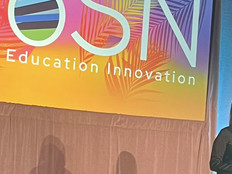How PD Can SCORE the BASICS FAST
It’s not uncommon for district IT personnel to think the following: “We have the best equipment and network. We provide training. Why aren’t they using it?”
It’s also not uncommon for districts to spend a lot of time developing well-intentioned professional-development programs that don’t quite hit the mark. Adding a few critical success factors can help programs achieve their potential.
“SCORE the BASICS FAST” is an acronym I use with the districts I assist to highlight some key points about how adult brains process information and how environmental factors affect training dynamics.
What’s important to remember is that PD is a journey, and that various dynamics of that journey help determine the outcomes achieved. Such dynamics include sequencing content for maximum understanding; ensuring that participants work together to acquire knowledge and skills; and monitoring participants’ attitudes about the experience so they don’t become overwhelmed or frustrated.
In many ways, planning PD with outcomes in mind is similar to planning a trip: It’s important to know the departure and arrival points — and to have some sense of how to get from Point A to Point B — but the journey is far more enjoyable if the itinerary is flexible.
The English author Lewis Carroll once said: “If you don’t know where you are going, any road will get you there.” Avoid getting sidetracked by adhering to these SCORE the BASICS FAST principles.
SCORE
SCORE identifies variables from research about the adult brain and how it learns. There are implications for professional development within each of them.
S: The adult brain is a rather Sophisticated system of eight-plus intelligences, five learning styles, two halves, two neural pathways and two memories working together to create individual outcomes of information processing and retention.
C: Content needs to be Chunked into small, understandable units that relate to and build upon past and emerging knowledge.
O: Adults need to Operate (that is, do something with) the content for learning to move from short- to long-term memory.
R: Review is necessary for the brain signals — that is, learning experiences — to be remembered.
E: Emotions are gateways for learning and key factors in getting — and keeping — attention. If a learner feels comfortable, he or she is more likely to participate, perform and then persist.
BASICS
BASICS are the components from research about adults’ preferred learning environments (also known as andragogy). Adults tend to exhibit these tendencies when they are challenged with something new.
B: They Build on the past. Adults tend to bring previous learning experiences — both good and bad — into the current PD session.
A: They are Active learners. Adults are constantly multitasking. If participants aren’t actively involved in training, their minds may wander.
S: They are Solution seekers. Adults seek immediate solutions to current obstacles and opportunities. For many, when it comes to new technologies, their attitude is “I want to use it now, not in a few weeks when it might be installed.”
I: They are Independent individualizers. Translated into learning design, this means the facilitator allows flexibility for individuals to adapt learning activities to their needs, desires and students.
C: They are Communication seekers. When attending workshops, most adults tend to seek connections with other participants, including the facilitator, and new resources.
S: They are Self-Esteem sleuths. Adults don’t like situations that are potentially embarrassing or uncomfortable. Learning design therefore needs to build in opportunities for easy early success and celebration.
Self-esteem sleuthing often is overlooked in PD planning, however. I once had a training participant confess, “If I try and fail, I’ll be embarrassed.” Successful PD sessions make participants feel safe if something goes wrong, and they provide resources for help during and after training. Facilitators can help this along by establishing a comfortable “give it a try” learning environment from the outset.
When I was first learning to use technology, my colleagues joked, “If Donna can learn this, anyone can!”
I regularly encourage PD facilitators to share something about their own difficulties in learning so participants feel OK about their mistakes.
FAST
FAST is the mantra I follow when leading PD sessions. In the first five minutes, I ask participants to help me create and maintain a FAST session. This means the following:
F: The atmosphere in sessions is Friendly and, hopefully, fun, with a few funny moments thrown in for good measure.
A: Participants are Active appliers of the information and skills just presented in authentic situations that are relevant to their work.
S: Participants are Sharing solutions and strategies with their learning partners and the facilitator.
T: Participants Try out new knowledge and skills with peers and the facilitator serving as coaches. These learning activities may include moments of frustration but also moments of joyful success.
Spell It Out
Successful PD sessions include a combination of some or all elements of SCORE the BASICS FAST. Don’t be overwhelmed by the number of components. Affirm those that you already include and add one or two more to each session. Soon, all of them will be included unconsciously.
Good luck on your journey, and enjoy the ride.







